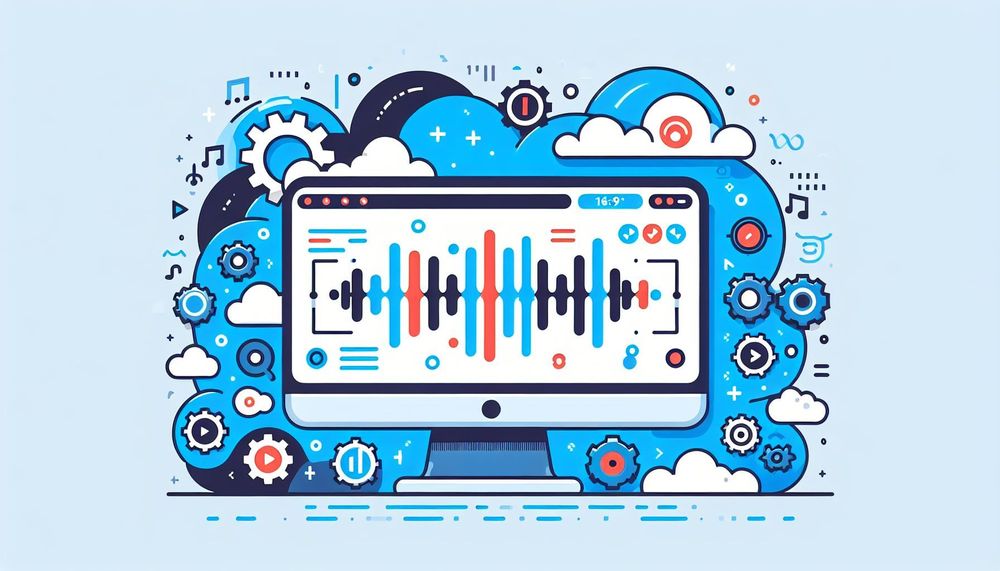Looking for a live audio streaming solution? You might be an organization like a church looking to live stream services online.
OR a town or city looking to update residents with timely audio broadcasts —during this pandemic— which might be easy to execute than video broadcasts.
Are you a radio station broadcaster (new or upcoming) looking for the next broadcasting platform that's modern, affordable, and easy-to-use?
You're in the right place!
Today, you're going to learn:
- How audio broadcasting on the internet works.
- Tools and software required to broadcast online.
- What is CloudRadio, and how it works?
Let's get started:
Chapter 1: How audio broadcasting on the internet works
Meet Mary. She is listening to a podcast file on her Tab —in a lofty apartment in Pittsburg, Pennsylvania.
We know how the podcast file was created....
Someone talked into the microphone. Sound waves were captured. Then, converted and stored as a digital file.
Credit Luisella Planeta Leoni Pixabay
Moving on...
Mary now feels a little bored, so she decides to listen to a show on BBC Radio 1.
How can she listen to a station that's thousands of miles across the pond?
In London, radio presenters are in the studio hosting guests. Mics capture their banter. Sound from each mic is mixed and sent to the studio computer.
Here, a program called an encoder, encodes this sound to a broadcastable format, for instance, AAC 64 Kbps.
The stream is then sent to the broadcasting server. Thousands of listeners, like Mary, connect to the station's broadcast server with a plethora of devices:
- Smartphones
- Smart speaker
- Laptops
- Computers
- Gaming consoles, etc.
Google Home by yangjiepsy01 Pixabay
The above explanation tried to cover a lot of info in one gulp. So how do we simply this even further?
Well, check out the schema below:
Audio originates from the studio (Could be your laptop). The broadcast server takes the stream and distributes it to listeners.
Now that you have a lay of the land, let's move to the tools and software required to broadcast audio online.
We'll cover some audio broadcasting software and see how a live audio hosting solution works.
Chapter 2: Tools and software required to broadcast online.
The first basic equipment you'll need is a microphone.
Hold on, don't skip to Amazon or another retail website just yet.
There are many mics to choose from. In most professional studios, you'll find dynamic or condenser mics that require XLR cabling.
That's means you have to hook 'em up to a broadcasting console.
Broadcasting console by Free-Photos Pixabay.
Purchasing a broadcasting console is an added cost. But you don't need that.
Get a USB mic for a simple setup.
When you connect it to your laptop or computer, there is no need to purchase an audio mixing console.
Next, you require an audio program. Here is a screenshot of a free radio broadcasting software:
The software is called PlayIt Live, and here are the instructions to set it up.
Some programs like PlayIt live have built-in encoders. The encoder can also be standalone, for instance, BUTT.
Yeah, the name might sound funny, but it's actually an acronym for Broadcasting Using This Tool. Clever ye?
Think of it like a computer with lots of memory and network bandwidth to support many listeners.
Your computer can act as an audio broadcasting server. You only need to install server-side programs like ShoutCast or Icecast (which we recommend).
Similarly, there is a way to rent a server online, and configure it for your needs.
But it is not as easy as it sounds, as you have to monitor your stream 24/7, ensure your server is running optimally, know how things work technically, etc.
Most broadcasters choose not to invest lots of time and resources in setting up servers on their own.
That's why they choose to sign up for audio hosting solutions like CloudRadio.
Chapter 3: What is CloudRadio, and how it works?
CloudRadio is a radio hosting platform and live audio streaming solution as well.
Users start out by creating accounts. Once they create radio servers, they get the power to distribute streams originating from their laptops or PCs to listeners worldwide.
Looking for a further explanation of how this service works?
Here is a tutorial that showcases the steps to get started: How to create a new radio server.
